Discover 20 hidden attractions, cool sights, and unusual things to do in Gloucester (United States). Don't miss out on these must-see attractions: Good Harbor Beach, Beauport, and Annisquam Harbor Light. Also, be sure to include Gloucester Fisherman's Memorial in your itinerary.
Below, you can find the list of the most amazing places you should visit in Gloucester (Massachusetts).
Table of Contents
Good Harbor Beach

Beach, Outdoor activities, Park, Surf spot
Address: 99 Thatcher Rd, 01930 Gloucester (Gloucester)
Beauport
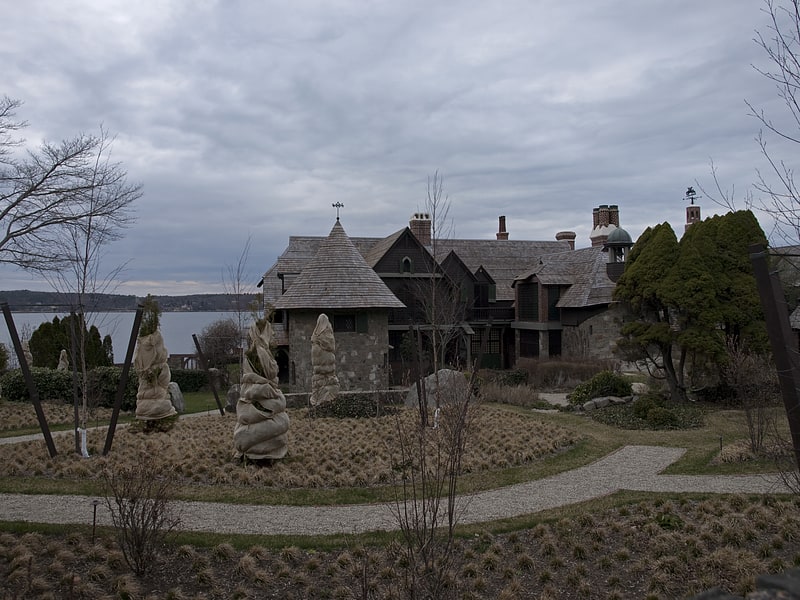
Historical place museum in Gloucester, Massachusetts. Beauport, also known as Sleeper–McCann House, Little Beauport, or Henry Davis Sleeper House, is a historic house in Gloucester, Massachusetts.[1]
Address: 75 Eastern Point Blvd, 01930-4433 Gloucester (Gloucester)
Annisquam Harbor Light
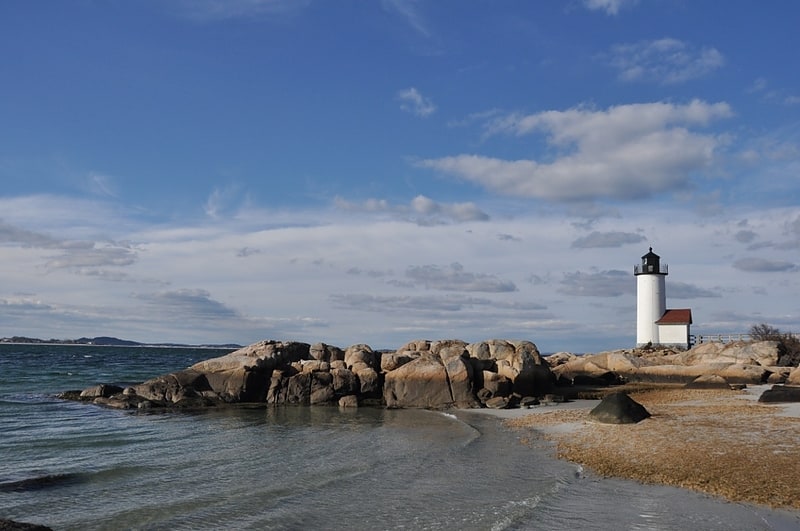
Lighthouse in Gloucester, Massachusetts. Annisquam Harbor Light Station is a historic lighthouse on Wigwam Point in the Annisquam neighborhood of Gloucester, Massachusetts. It can be viewed from nearby Wingaersheek Beach, Gloucester. It lies on the Annisquam River and is one of the four oldest lighthouses to surround the Gloucester peninsula as well as; Eastern Point Light, Ten Pound Island Light, and Thacher Island Light.[2]
Gloucester Fisherman's Memorial
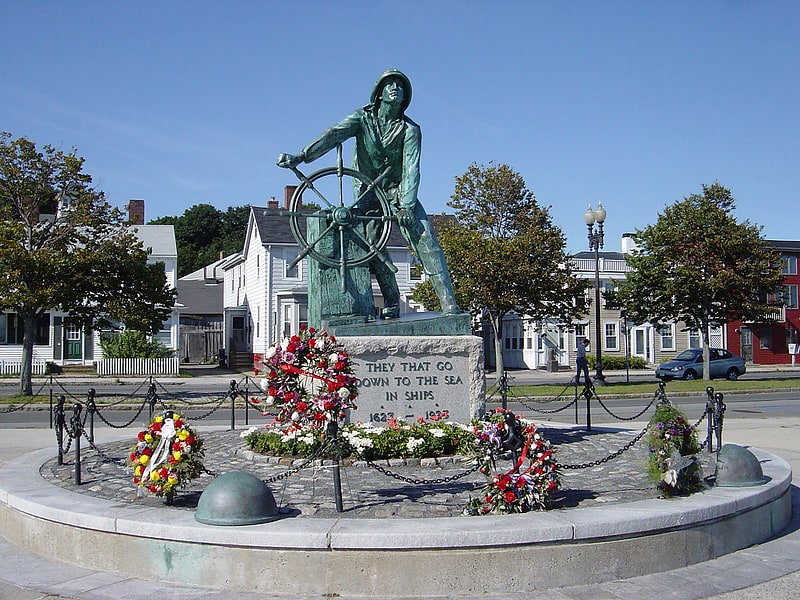
Sculpture by Leonard Craske. Gloucester Fisherman's Memorial is a historic memorial cenotaph sculpture on South Stacy Boulevard, near entrance of Stacy Esplanade in Gloucester, Massachusetts, built in 1925.[3]
Address: 57 Western Ave, 01930 Gloucester (Gloucester)
Stage Fort Park
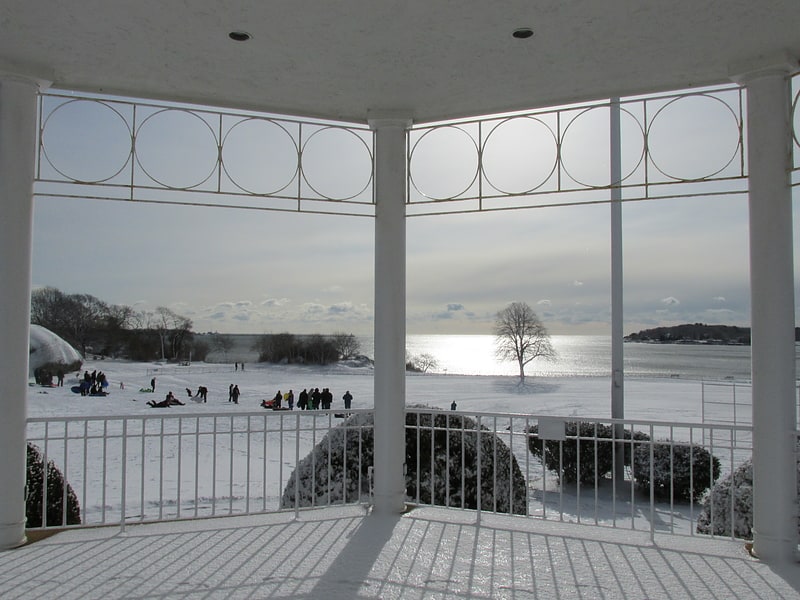
Park in Gloucester, Massachusetts. Stage Fort Park is a park at Stage Head in Gloucester, Massachusetts, part of the Essex National Heritage Area. It contains two beaches, a large playground, picnic benches, two baseball fields, a basketball court, a dog park and plenty of room for any weekend activities. The park includes Gloucester's Visitor and Welcome Center and Stage Fort, a reconstructed Civil War fort on a site fortified since 1635.
A seasonal restaurant in the park, The Cupboard of Gloucester, selling a wide variety of food and ice cream including fried clams and sandwiches.
The most prominent geological feature is a large rock, some sixty feet high and two hundred wide. It was said to be an ancient ritual stone used by Native Americans.
Stage Head was named for a fishing "stage" dating back to the original settlement by the Dorchester Adventurers Company circa 1624. It was the most likely original site of Roger Conant's "Great House", which was moved to Salem circa 1628. The area was first fortified in 1635 with the Stage Fort and garrisoned intermittently from then until the Spanish–American War. The fort was reconstructed in 1930. The works were also known variously as Fort Gloucester, Eastern Point Fort, Fort Conant, other names, and other variants of these names.
An 1862 painting by Fitz Henry Lane, Stage Fort across Gloucester Harbor, depicts the park area and the fort from further north in the harbor. The painting is in the collection of the Metropolitan Museum of Art.[4]
Address: Hough Ave, 01930 Gloucester (Gloucester)
Ten Pound Island Light
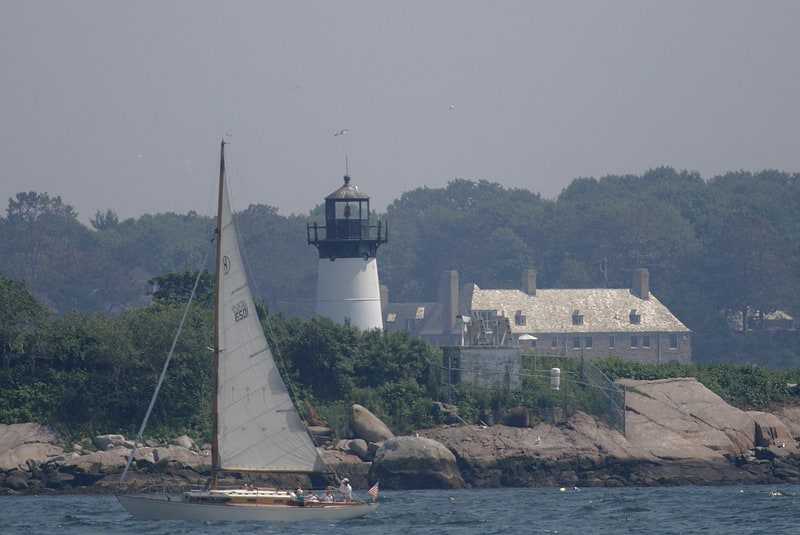
Lighthouse in Gloucester, Massachusetts. The Ten Pound Island Light is a historic lighthouse in Gloucester Harbor in Gloucester, Massachusetts. It is located on Ten Pound Island, near the eastern end of the harbor. The tower, built in 1881, is a conical cast iron structure 30 feet tall, replacing a stone tower first built on the site in 1821. The main body is painted white, and the top is painted black.
The tower is the only surviving part of a more extensive light station, which included a keeper's house and an oil house. The island additionally hosted a federal fish hatchery and a Coast Guard air (seaplane) station; only ruins survive.
The lighthouse was listed on the National Register of Historic Places in 1988. Both Winslow Homer and Fitz Henry Lane painted the first tower.[5]
Cape Ann Museum
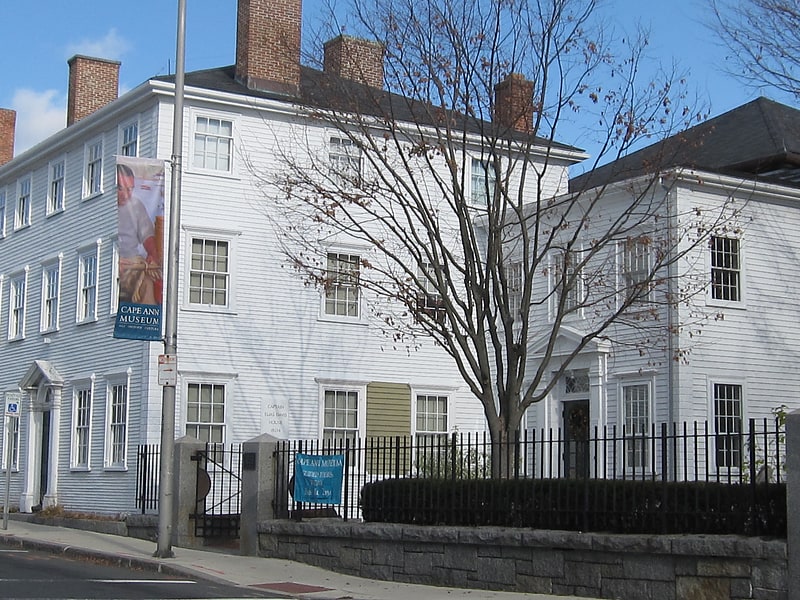
Museum in Gloucester, Massachusetts. Cape Ann Museum is an art and historical museum located in Gloucester, Massachusetts. Its collection and programming focuses on the artists and art colonies of Cape Ann, including the Rocky Neck Art Colony and the Folly Cove Designers. The museum's collection also features objects from Gloucester's fishing and maritime history, and granite quarrying history.[6]
Address: 27 Pleasant St, 01930 Gloucester (Gloucester)
Capt. Bill & Sons Whale Watch

Dolphin and whale watching, Boat or ferry, Gift shop
Address: 24 Harbor Loop, 01930 Gloucester (Gloucester)
Gloucester City Hall
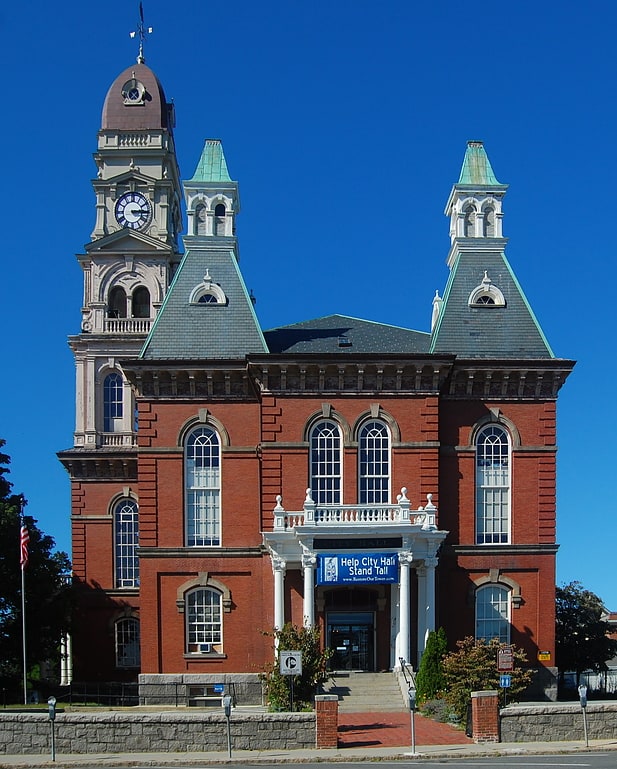
Building in Gloucester, Massachusetts. Gloucester City Hall is located at 9 Dale Avenue in Gloucester, Massachusetts. It was built in 1870 and dedicated the following year, and has served as the main location for the city's offices since then. Built to a design by Bryant and Rogers, it is a two-story Second Empire brick building. Each of the rectangular building's four corners is topped by its own pyramidal roof structure, above which is a small rectangular cupola with its own roof. Centered on the front elevation is a clock tower that is brick in its lower levels, and decorated wood above, ending in a copper dome.
The building was listed on the National Register of Historic Places in 1973, and included in the Central Gloucester Historic District in 1982.[7]
Address: 9 Dale Ave, Gloucester (Gloucester)
Annisquam Bridge
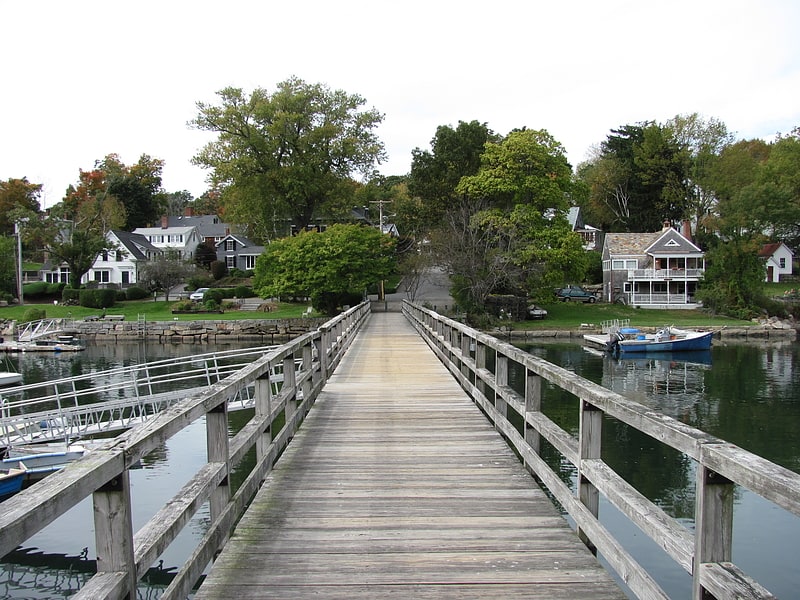
Bridge in Gloucester, Massachusetts. The Annisquam Bridge is a historic bridge in Annisquam, Massachusetts, a village within the city of Gloucester. The bridge was built in 1861 to replace an earlier 1847 bridge that crossed Lobster Cove. It is a wooden pile bridge, a type of which only two others were found in New England as part of a c. 1979 survey. The bridge is 440 feet long and 30 feet wide, and had a drawbridge section in the center that was moved by a hand-cranked winch. The bridge has repeatedly been the subject of safety closings and restorative work over the course of the 20th century, and was completely rebuilt in 1946–7, removing the draw. Despite this, it was closed to vehicular traffic in 1968, and pedestrian traffic in 1987. The bridge has since been rehabilitated, and is open to pedestrian traffic.
The bridge was listed on the National Register of Historic Places in 1983.[8]
Address: 36 Leonard Street, Gloucester (Gloucester)
Our Lady of Good Voyage Church
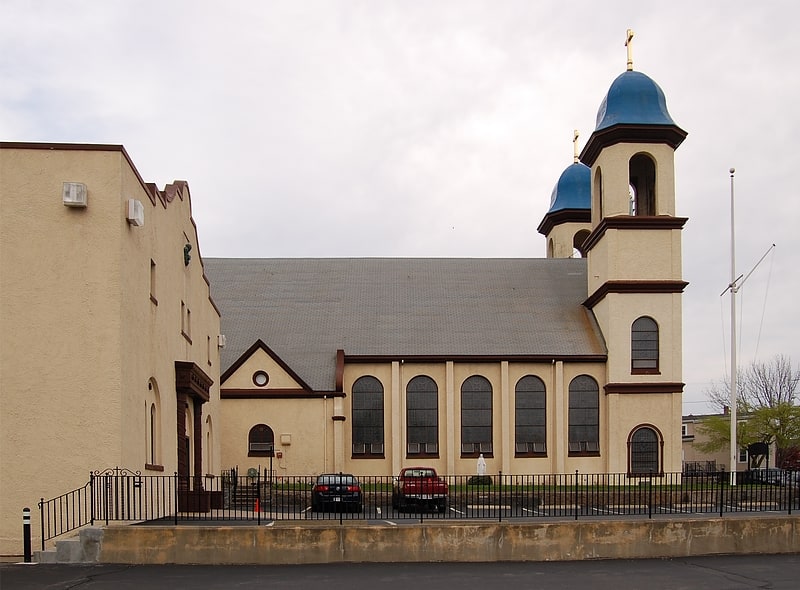
Catholic church in Gloucester, Massachusetts. Our Lady of Good Voyage Church is a historic Roman Catholic church at 136-144 Prospect Street and 2-4 Taylor Street in Gloucester, Massachusetts. The first church on the site was built in 1892 to serve a large Portuguese immigrant population that came to Gloucester to work in the fishery. That church burned in 1914, and this Spanish Revival building, designed to resemble the Santa Maria Madalena church in the Azorean community of Madalena on the island of Pico. The church also includes one of the oldest sets of full carillon bells in the United States.
The church was listed on the National Register of Historic Places in 1990.[9]
Address: 142 Prospect St, 01930-3797 Gloucester (Gloucester)
Adventure
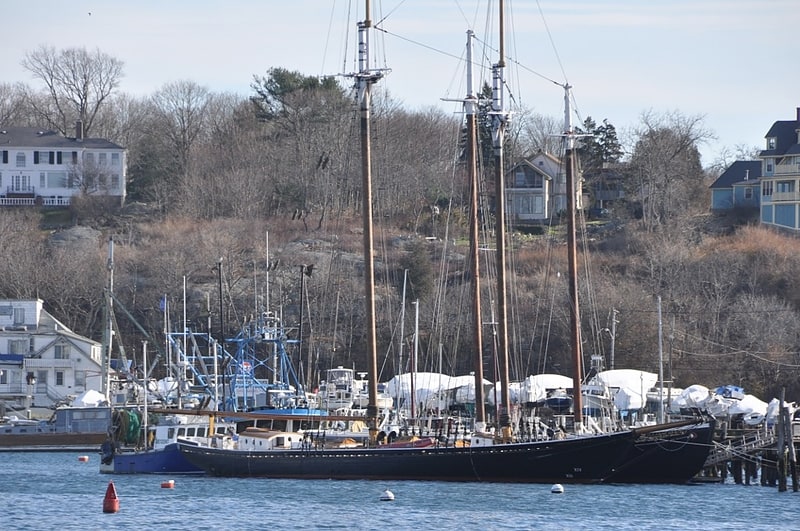
Historical landmark in Gloucester, Massachusetts. Adventure is a gaff rigged knockabout schooner. She was built in Essex, Massachusetts, USA, and launched in 1926 to work the Grand Banks fishing grounds out of Gloucester. She is one of only two surviving knockabout fishing schooners – ships designed without bowsprits for the safety of her crew.
Adventure was declared a National Historic Landmark in 1994, underwent a substantial restoration in 2012, and sails today in the tourist trade out of Gloucester.[10]
Eastern Point Light
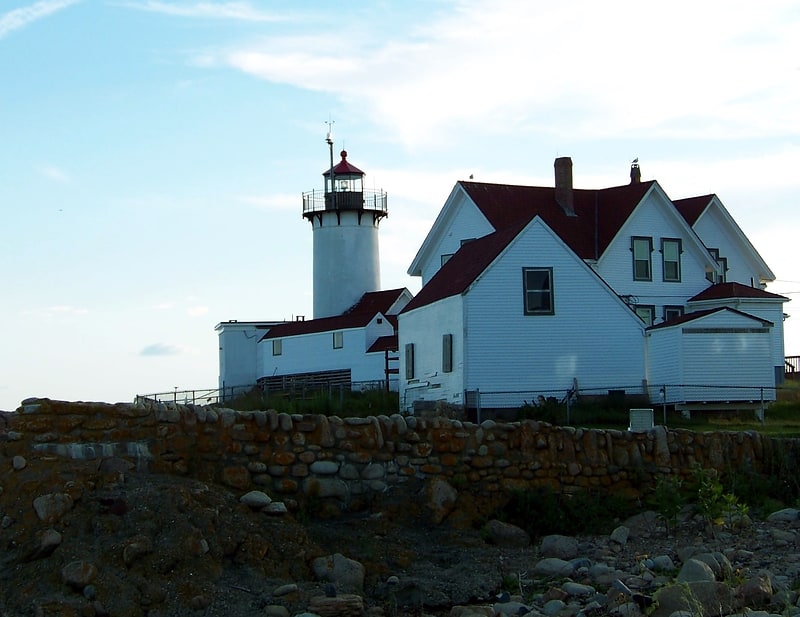
Lighthouse in Gloucester, Massachusetts. Eastern Point Light is a historic lighthouse on Cape Ann, in northeastern Massachusetts.It is known as the oldest seaport in America. The harbor has supported fishermen, whalers, and traders since 1616.[11]
Sargent House Museum
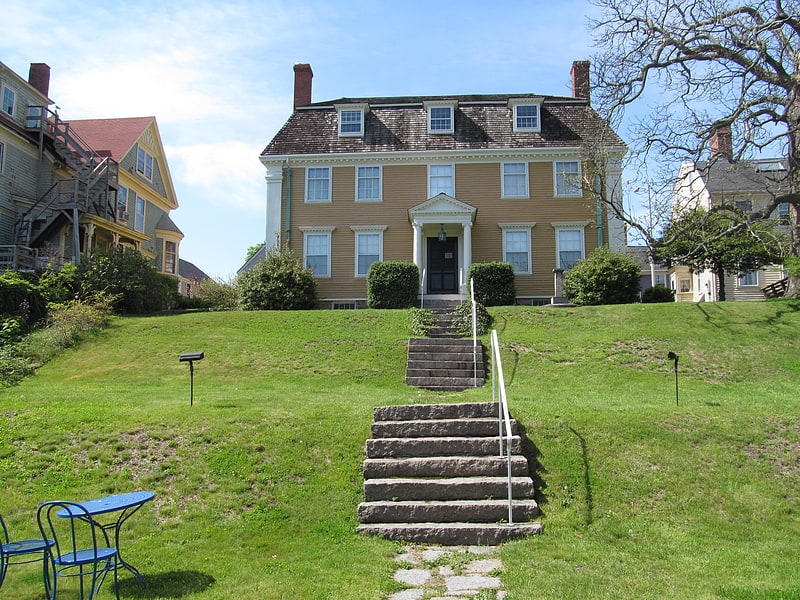
Museum in Gloucester, Massachusetts. The Sargent House Museum is a historic house museum located at 49 Middle Street, Gloucester, Massachusetts. The museum is open on weekends from Memorial day to Columbus day, and offers guided tours of the historic home, a small gift shop, and rotating exhibits in its exhibit space.
The Sargent House was built in 1782 for the feminist writer and philosopher Judith Sargent Murray and her first husband, John Stevens, a merchant in the West Indies trade. Judith's second husband, John Murray, the founder of the first Universalist Church in America, also lived in the house.
The home is considered high Georgian because of its symmetrical floor plan, and includes Georgian details in its quoins, windows, cornices, and columns. The central stairway is an unusually fine example of the skill of 18th-century woodworkers. It has an undercut spiral newel, two types of spiral balusters on each step, and a long arched window enclosed by Ionic columns at the landing. This stair was almost purchased by the MET Museum in NY around 1915 for installation their "period rooms." This spurred the former families and friends of the House to preserve it as a museum.
The Museum houses a small but exquisite collection of American decorative arts and furniture. It displays sculpture by Hiram Powers and one of the finest collections of family portraits in the United States by major American artists like Christian Gullager, Thomas Sully, James Frothingham, and Alvan Fisher. It has landscape prints and a painting by Fitz Henry Lane. The Museum owns several Thomas Sheraton pieces of furniture, as well as furniture made in major American furniture centers like Boston, Salem, Newburyport and New Orleans. Artifacts from the life of Judith Sargent Murray such as her dictionary and first edition "The Gleaner" are also exhibited.
The house has a collection of original works by the painter John Singer Sargent, a descendant of the Sargent family.[12]
Address: 49 Middle St, 01930-5736 Gloucester (Gloucester)
North Shore Art Association
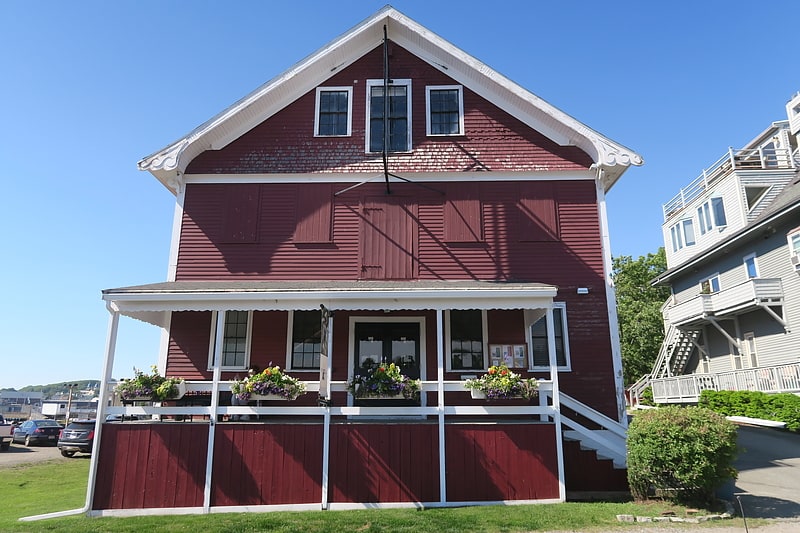
The North Shore Art Association of East Gloucester, Massachusetts is one of the oldest art associations in the United States. Founded in 1922, it was the gathering place of some of the great American artists of the 20th century.
Childe Hassam, Emile Gruppe, Harry Aiken Vincent, Paul Strisik, Fredrick Mulhaupt, Winslow Homer and many others were early members of the NSAA. Other members include Louise Herreshoff.[13]
Address: 11 Pirates Ln, 01930-3810 Gloucester (Gloucester)
Oak Grove Cemetery
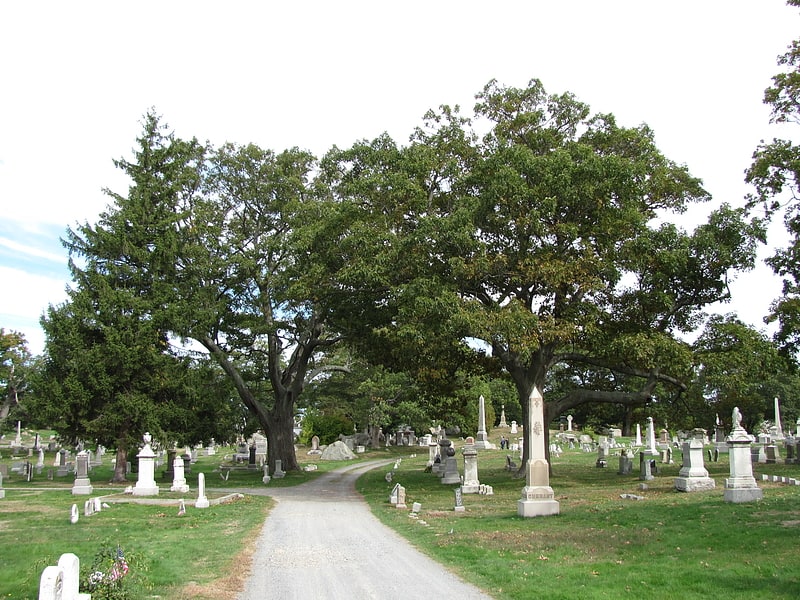
Cemetery in Gloucester, Massachusetts. The Oak Grove Cemetery is a historic cemetery, founded in 1854, which is bounded by Derby, Washington, and Grove Sts. and Maplewood Avenue in Gloucester, Massachusetts. The cemetery was founded by a group of local businessmen who sought to establish a cemetery in the then-fashionable rural cemetery style. They hired landscape architects Robert Morris Copeland and Horace William Shaler Cleveland to lay out a series of winding lanes. The Bradford Chapel was built through a bequest by George R. Bradford, another local businessman, and built in 1903–04. The cemetery is still privately owned, and has grown over time to occupy 11 acres.
It is the burial place of the operatic soprano Emma Abbott (1850–1891).
The cemetery was listed on the National Register of Historic Places in 1975.[14]
Address: 177 Washington St, Gloucester (Gloucester)
Schooner Adventure

Museum, Boat tours, Tours, Outdoor activities
Address: 23 Harbor Loop, 01930-5004 Gloucester
Gloucester Lyceum
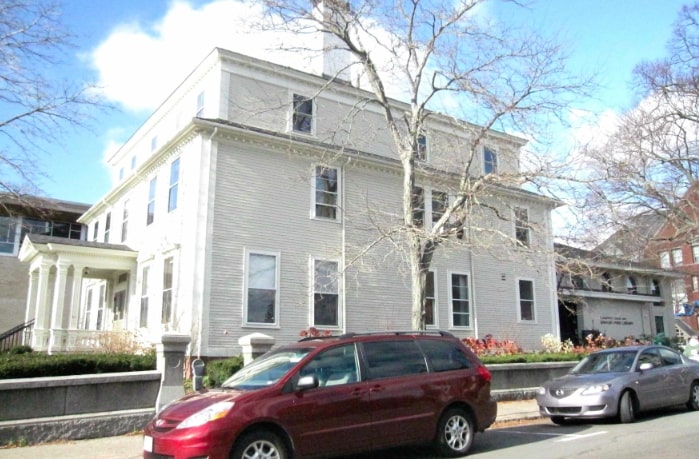
The Gloucester Lyceum of Gloucester, Massachusetts, was an association for "the improvement of its members in useful knowledge, and the advancement of popular education." It incorporated in 1831.
From the 1830s through at least the 1860s, the Lyceum arranged lectures from notables such as: Ralph Waldo Emerson, Oliver Wendell Holmes, Sr. "the two Everetts, Choate, Sumner, Rantoul, Winthrop, Colfax, Greely,.. Parker, Curtis, Phillips, Bayard Taylor, Dr. Holland, Chapin, Starr King, Hillard,.. Beecher, Giles, Gough, Dr. Hayes, the Arctic explorer, Burlingame,.. Alger, Whipple, Murdoch, Vanderhoff, Bancroft, and Dana." From 1830, "meetings were held in Union Hall.. until 1844 when the Murray Institute was used for one season prior to the occupancy of the Town Hall."
In 1854 "the Lyceum opened its library on Wednesday and Saturday afternoons and evenings, with 1,400 volumes. It was located in the eastern parlor of the residence of F.G. Low on what was then the corner of Spring and Duncan Streets." Patrons could use the library for $1 per year; the fee was waived for those unable to afford it. In 1863 the library moved to Front Street; the building burned down in 1864. Thereafter it occupied rooms on Middle Street (in the Baptist church), and later on Front Street (in the Babson block). Much of the funding for the library came from "Samuel E. Sawyer, a Boston merchant, but a native of Gloucester."
The Lyceum became the Gloucester Lyceum and Sawyer Free Library under a new charter in 1872.[15]
First Parish Burial Ground

Cemetery in Gloucester, Massachusetts. The First Parish Burial Ground is a historic cemetery located at 122 Centennial Avenue in Gloucester, Massachusetts. Established in 1644, the 2.5 acres site is Gloucester's oldest burying ground. It once stood at the heart of the Gloucester settlement, and was for 80 years its only cemetery. It was listed on the National Register of Historic Places in 1975. It is now being maintained jointly by the city and the Cemetery Restoration Partnership.[16]
Local Colors Artists' Cooperative

Museum, Art gallery, Shopping
Address: 121 Main St, 01930-5701 Gloucester (Gloucester)